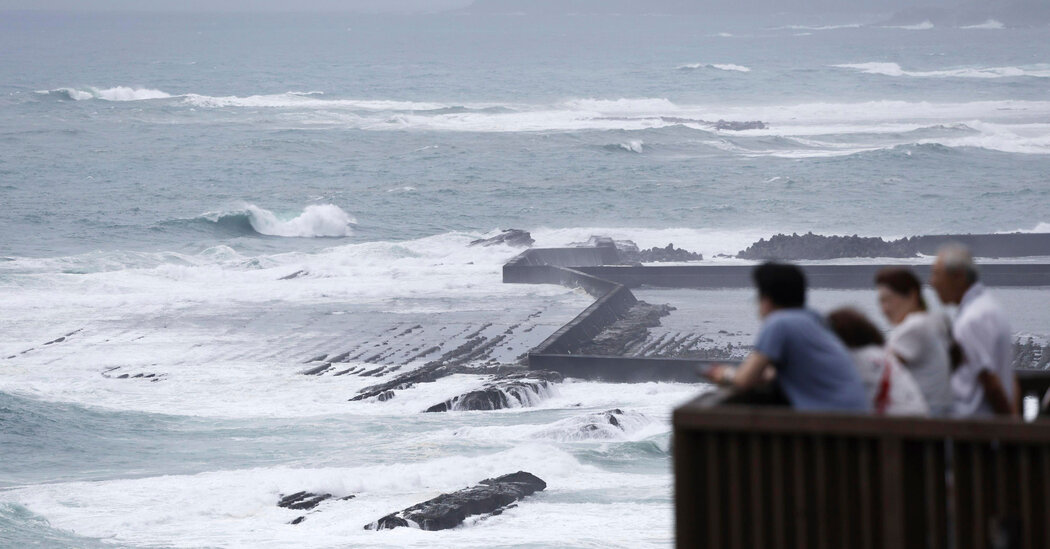Hurricane Shanshan was barreling in the direction of southwestern Japan on Tuesday, bringing heavy rain and powerful winds, forcing the cancellation of some flights and disrupting the nation’s high-speed rail community.
The highly effective storm had wind gusts of as much as 120 mph early Tuesday, equivalent to a class 3 hurricane, according to US Navy Joint Hurricane Warning Heart.
Because the hurricane approaches the Amami Islands, an archipelago southwest of mainland Japan, it’s anticipated to dump as much as 16 inches of rain on the islands on Tuesday, the Japan Meteorological Company said. Later within the week, components of western Japan may obtain almost two ft of rain inside 24 hours. The company warned of the potential for widespread flooding and landslides.
It was unclear whether or not the storm would make landfall, the company stated. It’s forecast to maneuver west on Tuesday and Wednesday, approaching the Amami Islands, earlier than shifting north on Thursday and doubtlessly passing over Kyushu, considered one of Japan’s fundamental islands.
Because the hurricane strikes slowly, the Amami area and western Japan will expertise lengthy durations of gusty or very robust winds and rain, the company stated.
Winds of as much as 90 mph had been forecast in southern Kyushu and the Amami area from Tuesday and will improve to 110 mph on Wednesday.
Japanese airways said that it had canceled some flights on Wednesday arriving and departing from components of central Japan, together with Osaka Kansai Airport, one of many nation’s largest airports. All Nippon Airways, the nation’s largest airline, said that the storm is anticipated to have an effect on some flights at Osaka Airport.
The nation’s high-speed rail community, the Shinkansen, started canceling some providers from Tuesday. Cancellations may proceed into the weekend, operators warned.
The beginning of the Pacific hurricane season this 12 months noticed a lower-than-average variety of tropical storms, partly because of The weather pattern of La Niña which is anticipated to reach later this summer season, in line with the Nationwide Climate Service.
La Niña, which is outlined by cooler equatorial sea floor temperatures, usually will increase wind shear — modifications in wind velocity and route — within the central Pacific area, making it more durable for storms to develop, the climate service said in May.
Between Might and July, the area noticed three tropical storms, two typhoons and one main hurricane, according to the National Oceanic and Atmospheric Administration. The typical quantity for this era between 1991 and 2020 is about eight tropical storms, about 4 typhoons and two main typhoons.

